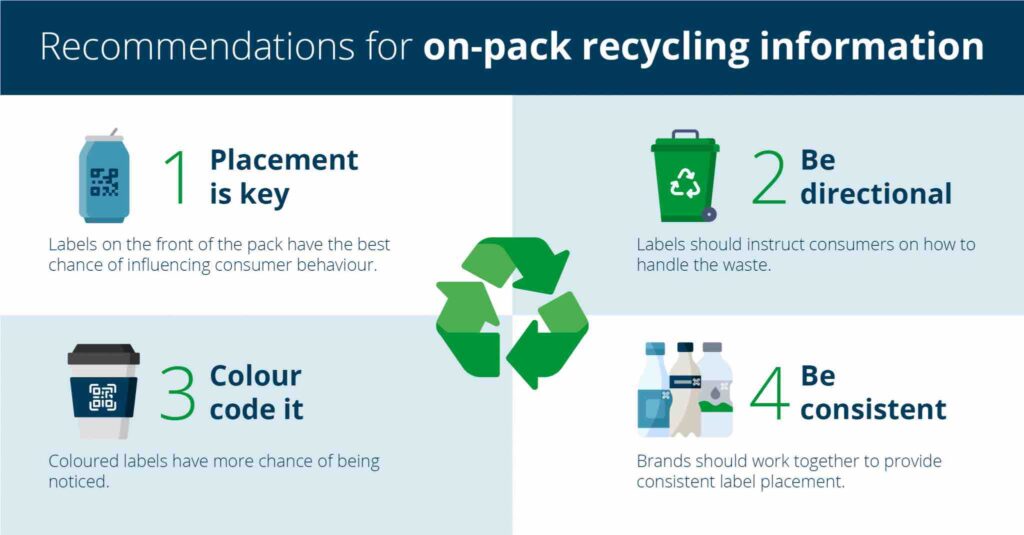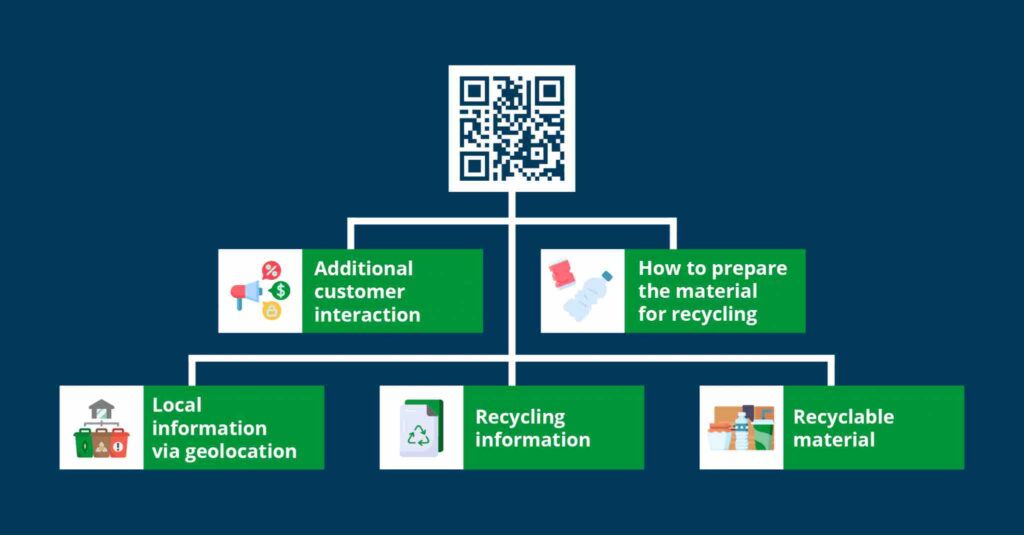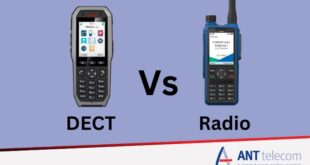With growing concern over the environmental impact of global waste generation, brands are continually looking for ways to increase the recyclability of their product packaging – but making packaging recyclable is only part of the solution. Lee Metters highlights the role of on-pack recycling labels and in particular GS1 Digital Link-enabled 2D codes, in boosting consumer recycling rates
Five years since the Ellen MacArthur Foundation and the UN Environment Programme launched the New Plastics Economy Global Commitment to create a circular economy for plastics and more than 500 signatories have signed up. Many global brands have promised to drastically increase their use of post-consumer recycled (PCR) plastic instead of virgin plastic by 2025.
Many brands have taken great strides in the right direction, but a problem remains – there is insufficient recycled plastic to meet demand. In its 2022 global report, the Ellen MacArthur Foundation announced that signatories had more than doubled their use of PCR since 2018 – from 4.8% to 10% – but remain way off the 2025 target. Moreover, virgin plastic use is back at 2018 levels after an initial drop.
Creating a circular economy for plastic waste
The first step towards creating a circular economy for plastic waste is designing products for recyclability, but making products recyclable is only part of the solution. Worldwide, we produce large volumes of recyclable waste daily, but the vast majority ends up in general waste collections. Indeed, a recent report by National Geographic found that 91% of plastic waste is not sent to a recycling facility. So, it is hardly a surprise that there is a significant debate about how to improve materials recovery.
Multiple start-ups and businesses aim to improve product identification at materials recovery facilities (MRFs), with everything from artificial intelligence and machine vision applications emerging alongside existing near-infrared and air separation technologies to identify waste better at the point of recycling.
However, focusing solely on recycling management overlooks the role of consumers – who have a significant impact on overall recycling rates. Consumers are vital stakeholders in the recycling process, and one of the major obstacles to increasing plastic recycling rates is consumer confusion about what can be recycled, how it should be prepared, and where to dispose of it. In 2022, the Waste and Recycling Action Programme in the UK revealed that as many as 84% of households in the UK regularly contaminate recycling bins so-called ‘wish cycling’ of non-recyclable products – including broken glass – which can affect the quality of collected material and, in extreme cases, lead to entire lorry loads of recycling being disposed of rather than recycled.
All this points to the need for more consumer awareness of correctly preparing and disposing of waste for recycling.
The rise of on-pack recycling labels
The consumer goods forum has a set of 9 Golden Rules for designing packaging for recyclability, including using on-pack recycling instructions to help with consumer awareness. This idea is backed by research – with a 2023 report from the US-based Recycling Partnership finding that 78% of US consumers look for recycling information on product labels to ensure an item ends up in the right place.
Using on-pack recycling labels not only makes things easier for consumers but it can also add additional brand value. A recent study from McKinsey and NielsenIQ found a ‘clear and material link’ between sustainability claims and consumer spending.
Around the world, recycling labels are gaining traction, with many countries mandating compulsory end-of-life labelling requirements:
France – Packaging must include the ‘Tri-man logo’, which shows how to dispose of each part of a product’s packaging.
UK – Producers must label all packaging types except flexibles with ‘recycle’ or ‘don’t recycle’ by March 2026, with flexibles following in 2027.
Italy – Packaging intended for end consumers must indicate the material of the packaging and be clearly labelled with appropriate instructions for disposal.
The list is not exhaustive, with many other countries, including Spain, Portugal, Poland, and Germany, expected to introduce compulsory regional labelling requirements in the coming years.
In other regions, organisations have emerged to provide voluntary on-pack recycling labels for brands:
North American How2Recycle scheme
A future-proof solution
There is clearly merit in adding on-pack recycling advice for consumers, but having multiple regional labelling requirements can prove confusing and make it difficult for brands selling products internationally, especially where legislation and guidance are prone to change. While there is work going on within the European Union to design a harmonised labelling system for waste across the EU, this is a significant undertaking, and expected to be a long journey.
A potential solution could be to include recycling information within a scannable QR code. Indeed, the new French labelling laws already mandate that QR codes be added to specific packaging types to give consumers access to recycling information at the scan of a smartphone.
The move by global standards agency GS1 to see 2D barcodes at the point of sale by 2027 also opens the door for the GS1 Digital Link – a phone-scannable QR code to be used at the point of sale, which can also take consumers to a brand-specific webpage for more information about the product. GS1 suggests that QR codes powered by the GS1 Digital Link standard could offer businesses an efficient and cost-effective solution for providing recycling information to consumers while future-proofing their packaging in preparation for new legislative requirements.
With a GS1 Digital Link QR code, brand owners can link to any number of information sources all from one symbol, including:
What materials make up the constituent parts of the packaging?
How to prepare an item for recycling, with tips on separating packaging, whether to clean the product, and if specific items (such as caps and pumps) need to be removed or left in place.
Tailored local information via geolocation, or postal code, to allow consumers to: check local recommendations and link to the closest recycling facility.
Additional consumer interaction, such as: incentives for recycling; tips for reusing packs where products can’t be recycled and feedback and surveys.
The key advantages of using a GS1 Digital Link-enabled QR code lie in the geolocation functionality, allowing brands to provide different information, and different language formats, for different locations without a change to pack design, and it is updateable over time, meaning that brands can add or adjust information as legislation requires. By adding a GS1 Digital Link on product packaging today, brands can meet current consumer and business demands and tackle any future requirements as and when needed through a single, flexible, and cost-effective solution.
Lee Metters, Group Business Development Director, Domino Printing Sciences.
 Engineer News Network The ultimate online news and information resource for today’s engineer
Engineer News Network The ultimate online news and information resource for today’s engineer






